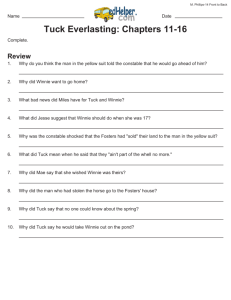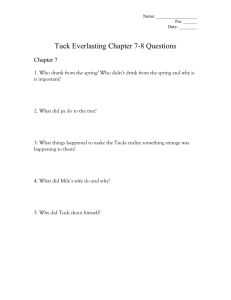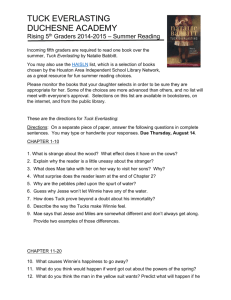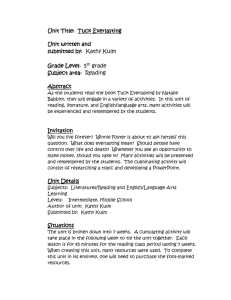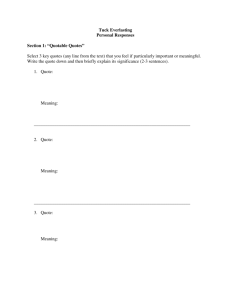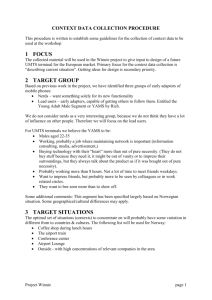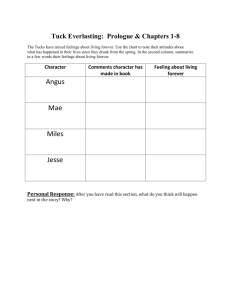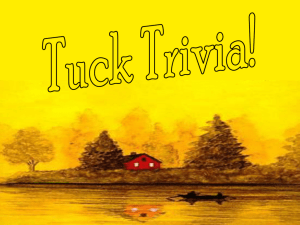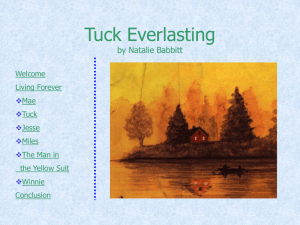Independent Reading Activity
advertisement
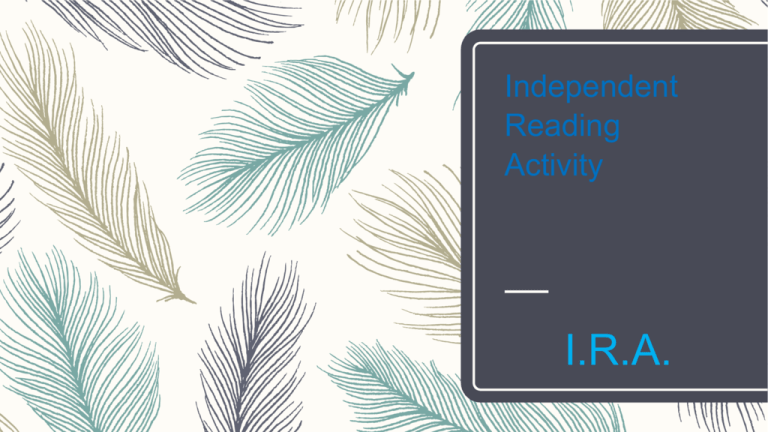
Independent Reading Activity I.R.A. Choosing the best I.R.A. for your book SETTING CHARACTERS As you are reading Choose a character independently, from your novel. describe the setting Describe one internal of your novel (time, trait and one external place & environment). trait. Use evidence Use evidence from from the text to the text to support support your your description. description. AUTHOR’S TECHNIQUE Read with a writer’s eye to determine what types of writing techniques the author of your novel uses. (figurative language; italicized words for emphasis; adjective, adjective, noun phrases?) How do the techniques you found help readers? Use evidence from the text to support your description. Tracking the Evidence for the Setting I.R.A. – While you are reading, be on the lookout for examples that can support your description of the Setting: A description of the time period, year, time of day, season, or anything having to do with the “when” of the story A description of the place or anything having to do with the “where” of the story A description of the environment or anything having to do with the “feeling” around the story Examples: War-like, peaceful, spooky, happy, silly, mysterious Tracking the Evidence for the Character I.R.A. – While you are reading, be on the lookout for examples that can support your description of a main character: An example of an external trait, or anything that describes how the character looks physically Ex. Tall, blonde, muscular, skinny An example of an internal trait, or anything that describes how the character feels, thinks, acts, or behaves Ex. Courageous, humorous, loving, studious Tracking the Evidence for the Author’s Technique I.R.A. – While you are reading, be on the lookout for examples that can support your description of a technique used by the author. – Possible findings: An example of figurative language, such as similes, metaphors, or personification An example of italicized words used by the author to make a point An example of a descriptive technique, such as an adjective, adjective noun phrase (sweet, fragrant rose) How to Begin Writing the I.R.A. – Write the first few sentences of your description to give an overview of your description. Be sure to include the title and author of your book. Do not include specific text examples yet. Sample Beginning for Setting I.R.A. The book, Tuck Everlasting, by Natalie Babbitt, has a setting that is both ordinary and mysterious. It takes place in the hot summer month of August, some time in the late 1800’s, in a wood owned by the Foster Family. Sample Beginning for Character I.R.A. The character, Mae Tuck, in the book, Tuck Everlasting, by Natalie Babbitt, is a kind, protective, stocky woman. She shows her love for her family and for Winnie Foster through her words and actions. Her potato shape adds to her charming personality. Sample Beginning for Author’s Technique I.R.A. Natalie Babbitt, the author of Tuck Everlasting, uses a variety of descriptive language techniques to help the reader visualize the story and characters. Babbitt uses figurative language, such as metaphors, similes, and personification in her writing to create a picture in the reader’s mind. How to Include Text Evidence in the I.R.A. – After you’ve written the first few sentences, it is time to elaborate on your description. Go back into your book and find evidence (remember those sticky notes!) that will support this description. Include at least two examples by quoting or paraphrasing the author’s words. Be sure to include the page or chapter number where the evidence is located. – Sample evidence from the text: – For example, in Chapter 19, Mae shows how protective she can be when she prevents the man in the yellow suit from taking Winnie. Holding the shotgun toward the man, “Mae’s face was dark red. ‘Not Winnie!’ she said between clenched teeth. ‘You ain’t going to do a thing like that to Winnie.’” How to Add Insight to the Description While providing text evidence is very important, your explanation of the evidence is what demonstrates your insight and overall understanding of the text. Each text example should be accompanied by an explanation of that example How does this example support your description or prove your point? Sample Explanation: This example demonstrates how far Mae is willing to go in order to protect Winnie. Her love for Winnie becomes more important, at that moment, than anything else.

